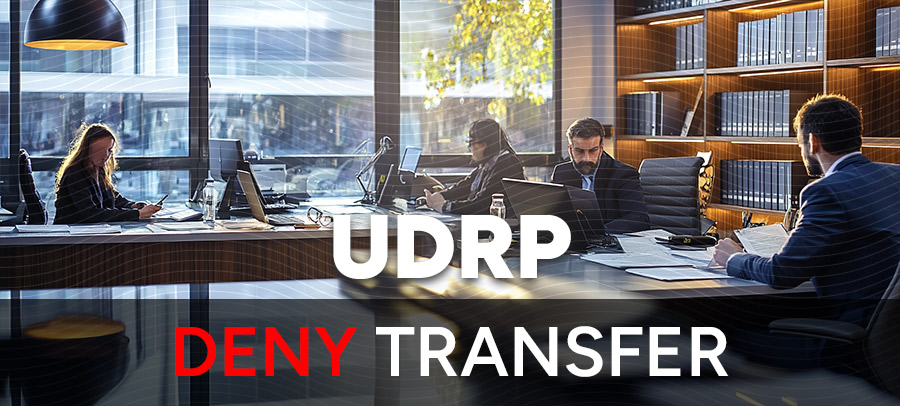Dutch software firm PAQT.com B.V. filed a UDRP to claim the domain PAQT.ai, arguing it matched their PAQT trademark registered in 2021 and that the Respondent had no rights to it. The disputed domain was registered on January 14, 2025, and appeared briefly online with a generic site advertising AI agents for enterprise use.
PAQT approached the Respondent in April 2025, first via LinkedIn, offering $250 for the domain. The Respondent declined, citing plans for an AI automation project and valuing the domain at $40,000 based on its brandability and relevance. The Complainant countered with $500, which was also rejected.
The Panel reviewed evidence including a pitch deck edited in March, early Google Workspace activity tied to the domain, and internal team setup emails, all predating contact with PAQT. While the website content was sparse and later removed, the Panel saw no indication of cybersquatting or intent to sell the domain solely to PAQT.
Ultimately, the Panel found the Respondent had made demonstrable preparations to use the domain in good faith, and that PAQT failed to show bad faith registration or lack of legitimate interest. No finding of Reverse Domain Name Hijacking was made.
Final decision: Deny the transfer of the domain PAQT.ai.

Copyright © 2025 DomainGang.com · All Rights Reserved.ARBITRATION AND MEDIATION CENTER – ADMINISTRATIVE PANEL DECISION
PAQT B.V. v. Peter Purcell
Case No. DAI2025-00281. The Parties
The Complainant is PAQT.com B.V., Netherlands (Kingdom of the), self-represented.
The Respondent is Peter Purcell, United States of America, self-represented.
2. The Domain Name and Registrar
The disputed domain name paqt.ai is registered with Name.com, Inc. (the “Registrar”).
3. Procedural History
The Complaint was filed with the WIPO Arbitration and Mediation Center (the “Center”) on June 19, 2025. On June 19, 2025, the Center transmitted by email to the Registrar a request for registrar verification in connection with the disputed domain name. On June 20, 2025, the Registrar transmitted by email to the Center its verification response confirming that the Respondent is listed as the registrant and providing the contact details.
The Center verified that the Complaint satisfied the formal requirements of the Uniform Domain Name Dispute Resolution Policy (the “Policy” or “UDRP”), the Rules for Uniform Domain Name Dispute Resolution Policy (the “Rules”), and the WIPO Supplemental Rules for Uniform Domain Name Dispute Resolution Policy (the “Supplemental Rules”). Since the Complaint did not meet all the formal requirements, the Center requested an Amended Complaint on June 23, 2025. On the same date, the Compliant filed an Amended Complaint.
In accordance with the Rules, paragraphs 2 and 4, the Center formally notified the Respondent of the Complaint, and the proceedings commenced on June 24, 2025. In accordance with the Rules, paragraph 5, the due date for Response was July 14, 2025. The Response was filed with the Center on July 14, 2025. The Respondent on the same date resubmitted the annexes of the Response.
The Center appointed Andrew D. S. Lothian as the sole panelist in this matter on July 21, 2025. The Panel finds that it was properly constituted. The Panel has submitted the Statement of Acceptance and Declaration of Impartiality and Independence, as required by the Center to ensure compliance with the Rules, paragraph 7.
4. Factual BackgroundThe Complainant is a private limited company (Besloten Vennootschap) registered in the Netherlands (Kingdom of the) which appears to have been founded on about February 26, 2014. From that date until August 17, 2021, the Complainant’s statutory name was Way2Web B.V. Its name then changed to PAQT.com B.V.
The Complainant has provided no information about its corporate activities, although based upon the goods and services listed in the trademark which it cites, as described below, it appears to be in the software development business.
The Complainant states that it is the owner of Benelux Registered Trademark Number 1438787 for the word mark PAQT, which mark was registered on June 26, 2021, in Classes 9, 35, 41, and 42. The listed owner of said mark on the face of the register is Way2Web Software Group B.V. The Complainant says that this is its former name and produces an entry from the KVK Handelsregister with a view to demonstrating this. However, there remains a discrepancy because the Complainant’s former statutory name is Way2Web B.V., and not Way2Web Software Group B.V. A listed trading name for the Complainant is “Way2Web Software” but again this is not an exact match for the trademark owner, nor is it the Complainant’s present or former statutory name. The Complainant does not explain the discrepancy and the Panel cannot see any clear progress in the KVK Handelsregister extract of changes of name that includes the exact name of the trademark owner for the KVK number produced (60120185). Had the Panel required to reach a conclusion on this issue, it might have been prepared to assume that the mark most likely belongs to an affiliate of the Complainant and is therefore a suitable mark for the Complainant to cite for the purposes of the Policy. Ultimately, given the outcome of this case, the discrepancy does not matter. Notwithstanding, and unless the context indicates otherwise, the Panel will refer to the mark as “the Complainant’s trademark” for convenience in the remainder of this Decision.
The disputed domain name was registered on January 14, 2025. The Respondent appears to be a private individual with an address in California, United States. The Complainant’s screenshot of the website associated with the disputed domain name is an archived version taken from the Internet Archive “Wayback Machine” dated May 6, 2025. It consists of a partially completed promotional website entitled “AI Agents for Enterprise” (title tag). The page itself is headed “AI customer support agents for enterprise”. It contains a scrolling list of logos, which might be thought to be those of the corporate clients of the business that is apparently the subject of the website, together with three apparent client testimonials.
Despite participating in the administrative proceeding, the Respondent did not comment upon the nature and purpose of the website associated with the disputed domain name to any substantive extent. As far as the Panel can tell, it is a placeholder for a business or project rather than the website of an active, trading entity, and this is particularly suggested by the fact that, while the graphics are professional in appearance, the content is somewhat generic and non-specific. For example, there is no reference to any actual organization that the Respondent might have founded. At some point between May 6, 2025 and May 16, 2025, the Respondent took the said website down. It has not explained why it did this.
Between April 18 and May 16, 2025, the Parties engaged in correspondence regarding the disputed domain name, copies of which they have each produced. There is a time difference between the Parties, meaning that the date is not always the same for each of them. However, the Panel has endeavored to present the exchange according to the correct order of the chronology.
On April 18, 2025, the Complainant’s CEO contacted the Respondent via the LinkedIn platform noting that the Respondent had registered the disputed domain name, adding that this may infringe the Complainant’s trademark rights and seeking an amicable resolution, proposing to share a formal notice, and requesting a response within the next three working days. The Complainant’s CEO followed up by email on April 25, 2025, and the Respondent replied indicating that it did not check its LinkedIn messages, acknowledging the Complainant’s concerns regarding “the similarity between PAQT and [the disputed domain name]”, and adding that the Respondent had never intended to create confusion or infringe on any rights when the disputed domain name was registered. The Respondent offered to review the Complainant’s formal notice or any additional information and indicated that it was open to finding a resolution that worked for both parties. In an email sent some 20 minutes later on the same day, the Respondent stated that it had been unaware of the existence of the Complainant when it registered the disputed domain name, adding that it was experimenting with a concept around AI automation for customer service. It noted, “It’s not an active business, there are zero customers and zero revenue, and there’s no commercial use at the moment”. It went on to say that it was happy to chat if the Complainant was exploring the AI space or was hoping to use the disputed domain name, repeating that it was open to a friendly resolution.
On April 28, 2025, the Complainant’s CEO replied to the Respondent stating that it was important for the Complainant to add the disputed domain name to its portfolio because it has a direct relationship to its company name and the services it provides and asking if the Respondent was open to a transfer of ownership. It added that the Complainant focuses on agentic AI and asked about the Respondent’s expertise. The Respondent replied on the same day noting its appreciation for the sharing of the Complainant’s direction, and stating that the Respondent was open to a potential transfer of the disputed domain name, albeit that, given its alignment with an agentic AI project that the Respondent was working on, and the potential of the AI space, it would need a compelling offer before parting with it. The Respondent closed by inviting the Complainant to feel free to share what it had in mind regarding an offer.
On April 29, 2025, the Complainant’s CEO responded stating that the Complainant would triple the average cost of a “.ai” domain name and therefore offer USD 250. On the same day, the Respondent replied that the Parties were far apart on valuation, adding, “Given the brand match, the strategic importance of the domain to your company, and the increasing value of .ai domains overall”, the Respondent would only consider a significantly higher figure, adding that it was not looking to sell, and would prefer to hold on to the disputed domain name. The Complainant replied, again on the same day, asking the Respondent to name a figure.
On May 2/3, 2025, the Respondent replied, “Given the exact brand match, your company’s long-term use of ‘PAQT,’ and the rising value of premium .ai domains – especially 4-letter, brandable names like this – I’d
consider transferring [the disputed domain name] for USD 40,000”, adding that this reflected the strategic value to the Complainant’s brand as it expanded into AI, and the scarcity of high quality “.ai” domain names.On May 6, 2025, the Complainant’s CEO replied with a final offer to resolve the matter amicably in the sum of USD 500, “solely to compensate for any administrative and technical costs involved in transferring the disputed domain name”, adding that this was not a purchase price but a gesture of goodwill to cover incidental expenses. There does not appear to have been a reply to that email.
On May 16, 2025, the Complainant’s CEO wrote again to the Respondent, noting that the website associated with the disputed domain name had recently been taken down, and outlining a complaint that the Complainant intended to make under the Policy, adding that it remained open to a voluntary transfer until the Complaint was filed.
The Respondent produces, but does not directly comment upon, the following items of evidence. First, a screenshot of what it describes as a “Pitch Deck”. The Panel considers that the Respondent has inadvertently substituted its entries for this exhibit with the subsequent one. The present exhibit bears a “last edited date”, suggesting that it should be the Respondent’s Exhibit B, entitled “Pitch Deck Last Edited Timestamp”. The item consists of a single static image of a presentation slide at the center of which is a black square marked “Paqt AI / Workflow Automationm [sic] for Construction”. Beneath this is an entry indicating that the presentation was “Edited 4 months ago”. On the assumption that this exhibit is contemporaneous to the filing of the Response, this entry would suggest that the presentation was last edited on or about March 14, 2025, i.e., predating the Parties’ correspondence.
Secondly, the Respondent produces a further static image which the Panel considers is intended to be the Respondent’s Exhibit A, entitled “Pitch Deck Screenshot”. This consists of the same static image of the initial slide, with the same misspelling on the title, headed with icons including “animate”, suggesting that this came from a presentation slide package, together with thumbnails of the subsequent slides. The thumbnails are very small, and the slides they refer to have not been produced by the Respondent. However, while it cannot read the content, the Panel can identify that there are 12 slides in total, and that the first slide is entitled “Title”, while the subsequent slides are named, “Intro”, “Problem”, “Solution”, “Product”, “Why No..”, “Traction”, “Go To M..”, “Market S..”, “Compe..”, “Team”, and “Ask”.
Thirdly, the Respondent produces what it states is a “Domain Registration Confirmation” but is in fact an email dated February 15, 2025, from its Registrar, indicating that the Respondent’s Google Workspace Business Starter Monthly product in respect of the disputed domain name is expiring on February 20, 2025. This suggests that the Respondent may have taken out a paid monthly Google Workspace plan (a business or office suite of software), beginning at least as early as January 20, 2025, in respect of the disputed domain name.
Finally, the Respondent produces what it describes as “Team Communications (Proof of Use)” consisting of a single static image relating to “Paqt AI Founders”, therefore corresponding with the year 2025, listing what appear to be two collaborators, with a telephone number for at least one of these commencing +385 (the international telephone code for Croatia), together with a notice stating, “You can log into gmail with your new emails”. Two email addresses using the disputed domain name are then listed (above the date “Tue, Jan 21”), neither of which is the email address that the Respondent used for its correspondence with the Complainant.
5. Parties’ Contentions
A. Complainant
The Complainant contends that it has satisfied each of the elements required under the Policy for a transfer of the disputed domain name.
Notably, the Complainant contends that the disputed domain name is identical to the Complainant’s trademark, and that the “.ai” suffix does not prevent confusion. The Complainant adds that the Respondent is not known by the disputed domain name, has no business thereunder, and has no related trademark rights, pointing out that the Respondent stated in the Parties’ correspondence that it had no active business, zero customers, and zero revenue.
The Complainant notes that the Respondent initially denied commercial intent but then demanded USD 40,000 for the disputed domain name, far exceeding its out-of-pocket registration costs, and bringing the matter within the ambit of paragraph 4(b)(i) of the Policy, indicating that the Respondent registered the disputed domain name primarily for the purpose of selling it to the Complainant for valuable consideration. The Complainant adds that the Respondent removed the content for the website associated with the disputed domain name after purchase negotiations failed, which the Complainant characterizes as behavior consistent with cybersquatting.
B. Respondent
The Respondent contends that the Complainant has not satisfied the elements required under the Policy for a transfer of the disputed domain name.
Notably, the Respondent asserts that the Complaint is retaliatory and constitutes an unethical attempt to forcibly take a domain name that was registered in good faith, independently conceived without knowledge of the Complainant, used for a real and legitimate, non-infringing project, and offered in good faith for sale when approached. The Respondent also submits that this is a textbook example of Reverse Domain Name Hijacking and seeks the corresponding findings.
The Respondent states that it registered the disputed domain name for an AI automation project and had no prior knowledge of PAQT.com [BV]. The Respondent characterizes the Parties’ correspondence as follows: The Complainant contacted the Respondent threatening legal action, the Respondent replied explaining that the disputed domain name was used for an AI project with no commercial use, the Complainant asked if the Respondent would sell the disputed domain name, the Respondent gave a fair market valuation of USD 40,000, the Complainant responded with an offer of USD 500, and again threatened legal action. The Respondent submits that this sequence indicates that the Complaint is a retaliatory tactic after a failure to buy the disputed domain name based upon an unsolicited offer to purchase, which it says is a classic example of Reverse Domain Name Hijacking.
6. Discussion and Findings
6.1. Procedural Consideration: Identity of Complainant
The Panel notes a discrepancy as to whether the Complainant is named PAQT B.V. or PAQT.com B.V. The former entity is named in Section II of the Complaint and the Amended Complaint as the Complainant under the heading “Parties”, while the latter entity is named in a note at the end of said section, which states, “The Complainant PAQT.com B.V. is the legal successor of Way2Web Software Group B.V., the trademark owner listed in the BOIP trademark register. This is confirmed by the KVK Handelsregister […]”.
The Panel notes that the Complaint bears to be signed by an officer of an entity named PAQT.com B.V. In turn, this matches the details in the KVK Handelsregister entry referring to the entity currently named PAQT.com B.V. The Complainant states that it has produced this entry to demonstrate that it is the same entity as the owner of the trademark which it cites, which it says remains in the Complainant’s former name. Given that the only inconsistency as to the Complainant’s identity is the introduction to the Complainant as PAQT B.V., and that the other references to the Complainant seem consistently to indicate that it is named PAQT.com B.V., the Panel finds that this latter entity is the Complainant in the present matter.
6.2. Substantive Issues
A. Identical or Confusingly Similar
It is well accepted that the first element functions primarily as a standing requirement. The standing (or threshold) test for confusing similarity involves a reasoned but relatively straightforward comparison between the Complainant’s trademark and the disputed domain name. WIPO Overview of WIPO Panel Views on Selected UDRP Questions, Third Edition, (“WIPO Overview 3.0”), section 1.7.
As discussed in the factual background section above, the Complainant has cited a Benelux trademark in which it claims UDRP-relevant rights. On the face of the register, this mark is owned by Way2Web Software Group B.V. The Complainant asserts that this is a former name of the Complainant entity, although the entry from the KVK Handelsregister that it produces to support this assertion does not mention any entity named Way2Web Software Group B.V. The closest former name listed is a trading name (not statutory name) of Way2Web Software, which is not an exact match.
It is possible that the trademark owner is an affiliated entity to the Complainant, or that there is some other explanation for the apparent discrepancy. Ultimately, in light of the Panel’s disposal of the case, it does not require to reach a conclusion on the first element assessment.
B. Rights or Legitimate Interests and Registered and Used in Bad Faith
In the present case, for reasons of economy in decision-making, it is convenient to consider the second and third elements of the Policy together, noting also that the evidence before the Panel impacts the analysis for each of these on a similar basis.
Paragraph 4(c) of the Policy provides a list of circumstances in which the Respondent may demonstrate rights or legitimate interests in a disputed domain name.
Although the overall burden of proof in UDRP proceedings is on the complainant, panels have recognized that proving a respondent lacks rights or legitimate interests in a domain name may result in the difficult task of “proving a negative”, requiring information that is often primarily within the knowledge or control of the respondent. As such, where a complainant makes out a prima facie case that the respondent lacks rights or legitimate interests, the burden of production on this element shifts to the respondent to come forward with relevant evidence demonstrating rights or legitimate interests in the domain name (although the burden of proof always remains on the complainant). If the respondent fails to come forward with such relevant evidence, the complainant is deemed to have satisfied the second element. WIPO Overview 3.0, section 2.1.
Having reviewed the available record, the Panel finds the Complainant has established a prima facie case that the Respondent lacks rights or legitimate interests in the disputed domain name. The Panel therefore turns to the Respondent’s case in rebuttal. The essence of this is that the Respondent acquired the disputed domain name to experiment with a concept around AI automation for customer service without any knowledge of the Complainant. The Respondent adds that, some time after its registration of the disputed domain name, the Complainant made an unsolicited approach to the Respondent, that abortive negotiations to sell the disputed domain name then followed, but that the Parties were too far apart on price, and that during the negotiations the Respondent indicated that it wished to retain the disputed domain name for its project. This is effectively a case in relation to paragraph 4(c)(i) of the Policy, namely whether before any notice to the Respondent of the dispute, it has used, or made demonstrable preparations to use, the disputed domain name or a corresponding name in connection with a bona fide offering of goods or services.
When approached by the Complainant, the Respondent initially explained that while it was experimenting with an AI concept, it was not an active business, there were zero customers and zero revenue, and no commercial use at that time. The Complainant focuses on this, and the fact that the Respondent selected the exact same four letters for its project as those of the Complainant’s trademark, when both of the Parties are allegedly in the same line of business and are both interested in agentic AI. The thrust of the Complainant’s case is that this is too unlikely to be a coincidence, and therefore that the Respondent’s alleged preparations to use the disputed domain name for that purpose are merely a pretext for cybersquatting.
The Panel understands that the fact that both of the Parties have selected the same, relatively unusual, combination of four letters for an AI project might appear suspicious to the Complainant. However, given the finite number of four-character domain names, such coincidences can and do occur, and the risk of these is potentially heightened by the selection of the “.ai” country code Top-Level Domain Name, simply because it has become widely associated with AI-related activities and is particularly popular among registrants, whereby there is scarcity in the namespace. Consequently, the fact that the Respondent selected the exact same letters as those of the Complainant’s Benelux trademark for the disputed domain name, in connection with an AI project, does not on balance demonstrate that the Respondent is a cybersquatter, and/or that its preparations for the use of the disputed domain name are more probably than not pretextual. It should be noted in addition that the fact that the Respondent might as yet have no active business, no customers, no revenue, and no commercial use of the disputed domain name is not, in and of itself, inconsistent with it making demonstrable preparations to use the disputed domain name in connection with a bona fide offering of goods and services.
The Panel has paid careful attention to the evidence allegedly supporting the Respondent’s position on demonstrable preparations. The Panel first considers the timestamp produced in connection with the Respondent’s pitch deck. This shows that it was last edited on about March 14, 2025. The Panel has no reason to disbelieve that date, which it finds to be reasonably consistent with the rest of the Respondent’s alleged preparations, as discussed below. Crucially, this date is well before the first approach from the Complainant, on April 18, 2025, indicating that the pitch deck was not merely created as a consequence of that approach, i.e., as a reverse-engineered response to the Complainant’s threat of formal action.
Considering the pitch deck itself, on its own, this leaves much to be desired as evidence of demonstrable preparations within the meaning of the Policy. The full slideshow has not been produced to the Panel, merely the front slide and the partially readable thumbnails for the rest of the presentation. The front page contains an obvious typographical error of the sort that would never typically be left in a business presentation, suggesting that it might have been hastily prepared. Nevertheless, the image does appear to be a screenshot of a fully-fledged presentation in an active window within the relevant presentation editor. The thumbnail slide titles, insofar as readable, seem fairly typical in Panel’s experience for a presentation introducing a proposed business, and in these circumstances, the Panel cannot condemn the Respondent for what is evidently a work in progress, especially as the last edit predates the Complainant’s approach.The Panel considers that the Respondent’s Google Workspace product purchase on January 20, 2025, some six days after the disputed domain name was registered, and the product’s likely renewal a month later, might reasonably be considered as typical of the demonstrable preparations of a startup entity/project in furtherance of the development of a business concept. Such an entity might reasonably be expected to obtain and configure the typical office suite of services, and crucially, access to email addresses via the project’s official domain name, shortly after registering it. This is what the Respondent has organized here. The date of the purchase of the office suite service, coming just a few days after the disputed domain name was registered, is entirely consistent with such demonstrable preparations and, crucially, long predates the unsolicited approach by Complainant. Likewise, the entry showing the creation (before January 21, 2025) of two email addresses for use with the disputed domain name on behalf of “Paqt AI Founders”, is consistent with the Respondent’s position, taking place shortly after it obtained access to the office suite. This means that the Respondent was configuring its office suite shortly after it ordered it. Again, this long predates any notice of the issue which the Complainant has taken with the disputed domain name.
It must be noted that the materials produced by the Respondent are not wholly conclusive of a lack of cybersquatting intent. They could be examples of the actions of someone who is seeking to build a pretext or smokescreen to divert attention away from the fact that they have deliberately targeted the Complainant by making an abusive domain name registration. Nevertheless, the Panel considers that the notion that the evidence in this particular case demonstrates pretext-building is somewhat less probable than the alternative, and that these most likely show genuine preparations to use the disputed domain name within the meaning of paragraph 4(c)(i) of the Policy, particularly given the weight of activities in which the Respondent engaged after registering the disputed domain name, all of which were completed well before it received any notice of the dispute.
The Panel has also considered the screenshot produced by the Complainant for the website associated with the disputed domain name. There is nothing for the Panel to go on here either for or against the Respondent’s position. The site appears to consist of largely generic or “dummy” text, albeit graphically quite professional in appearance, relating to an alleged business engaging in AI-driven customer services. This is just as consistent with the Respondent experimenting with website layout and content for its proposed concept as it is indicative of any pretext for cybersquatting. It remains unexplained why the Respondent took this site down between May 6, 2025 and May 16, 2025, although there may not necessarily be anything sinister in the fact that it did. The Respondent might have been trying to avoid the scrutiny of the Panel, but it may just as likely have completed its test pages, and reverted to what startups sometimes call “stealth mode”, or it may equally have decided that the appearance of the draft website might be inconsistent with its statement to the Complainant that it had no active business, given that the site presents as a live business when it is not. As far as the Panel is concerned, the website is consistent with the Respondent working on an early-stage online presence for its project rather than indicating on balance that the Respondent is a cybersquatter.
One crucial aspect of the evidence before the Panel is that there is nothing before it demonstrating the extent or reach of the trademark cited by the Complainant. As indicated above, combinations of four letters can have many applications in brands, trademarks, and domain names, and can represent multiple acronyms or initialisms, except perhaps in the case of extremely well-known marks. The Complainant produces nothing to explain whether it considers itself to be in the latter category and does not discuss whether the letters of its mark represent an initialism of some sort. Nor does the Complainant attempt to prove that it is inconceivable that the Respondent, a person apparently engaged in the AI field in the United States, could reasonably assert that it was unaware of the Complainant when it registered the disputed domain name. This amounts to a notable absence of supporting evidence from the Complainant for its case. In contrast, the Respondent has made an unequivocal denial that it had any such prior knowledge, and the Panel has no reason in present circumstances, and based upon the present record, to disbelieve it, even where it has landed (apparently coincidentally) upon exactly the same combination of letters for the disputed domain name as the Complainant’s mark.
Finally, the Panel turns to consider the Parties’ negotiations regarding a sale of the disputed domain name. It must be noted at the outset of this topic that the Respondent did not initiate any contact with the Complainant. The Complainant made an unsolicited approach to the Respondent over the LinkedIn platform. There are nevertheless some aspects of the Respondent’s communications that do give the Panel pause for thought. The Respondent has not put forward any details regarding the nature of its project, whereby the Panel could get a real sense of it, in order to more fully exclude the possibility that it might be pretextual. Furthermore, when discussing the question of value of the disputed domain name, the Respondent comments about the “exact brand match”, and the Complainant’s “long-term use of ‘PAQT’”. The latter comment in particular clearly indicates that, at least by this point, the Respondent has researched the Complainant with a view to determining the likely depth of its pockets.
Nevertheless, the Complainant’s open approach to the Respondent, and its expressed concern regarding the importance to it of having the disputed domain name in its portfolio, means that the Respondent might just as likely have investigated with whom it was dealing after the unsolicited approach was made. It does not demonstrate that the Respondent more probably than not registered the disputed domain name with abusive intent to sell it to the Complainant at a profit. Consequently, the fact that the Respondent raised the issue of the value of the disputed domain name to the Complainant in particular (as opposed to a more objective basis for valuation) does not necessarily demonstrate that it must have had the Complainant in its sights at the point of registration. It should also be added that, in addressing the value of the disputed domain name, the Respondent did indeed raise some objective factors, namely that the disputed domain name is a high quality four-character domain name in a very desirable, and scarce, space.
Taking all of these matters together, the Panel determines on the balance of probabilities that the Respondent has made demonstrable preparations to use the disputed domain name in connection with a bona fide offering of goods and services before notice to it of the dispute, and that it neither registered the disputed domain name primarily for the purpose of selling it to the Complainant at a price exceeding its out-of-pocket costs, nor otherwise registered it in bad faith. That said, the evidence here does not run exclusively in the Respondent’s favor, and the case is something of a close call, particularly given the lack of detail regarding the Respondent’s project and background. What the Respondent ultimately does with the disputed domain name may be more enlightening, and it remains open to the Complainant to refile the Complaint should new material evidence come to light at a later stage, of which it could not previously have been aware, which is indicative of any cybersquatting intent on the part of the Respondent at the point when the disputed domain name was registered.
Consequently, the Panel finds that the Complainant has failed to demonstrate that the Respondent has no rights or legitimate interests in the disputed domain name, and that the disputed domain name has been registered and is being used in bad faith, to the required standard of proof. In these circumstances, the Complaint fails.
C. Reverse Domain Name Hijacking
Paragraph 15(e) of the Rules provides that, if after considering the submissions, the Panel finds that the Complaint was brought in bad faith, for example in an attempt at Reverse Domain Name Hijacking or to harass the domain-name holder, the Panel shall declare in its decision that the Complaint was brought in bad faith and constitutes an abuse of the administrative proceeding. The mere lack of success of the complaint is not, on its own, sufficient to constitute reverse domain name hijacking. WIPO Overview 3.0, section 4.16.
In the present case, the Respondent seeks a finding of Reverse Domain Name Hijacking on the basis that the Complaint is a retaliatory action in response to the Complainant not obtaining the disputed domain name for the price that it wanted. The Panel considers however that, despite being unsuccessful in the administrative proceeding, the Complainant did not bring the Complaint in bad faith. The Complainant made it clear to the Respondent from the outset of the Parties’ communications that it was seeking to rely upon its trademark rights, while also being interested in exploring an amicable solution. It characterized any price that was discussed as effectively a payment for administrative expenses rather than a purchase price. An amicable solution did not present itself, and the Complainant proceeded to file the Complaint under the Policy, a matter of which it had given the Respondent prior notice.
Ultimately, it cannot be overlooked that the disputed domain name represents an exact match for the Complainant’s trademark in circumstances where the Respondent’s interest lies in the exact same area of business as that in which the Complainant is engaged. This is likely to have raised a reasonable suspicion in the minds of those behind the Complainant. Furthermore, in the Parties’ correspondence, the Respondent was notably economical with information that might have suggested to the Complainant that its project was genuine and not a pretext for targeting the Complainant’s rights, such as the nature of the project itself, or the Respondent’s knowledge and experience in the area of AI. The Panel therefore considers that the Complainant was entitled to put the Respondent to the proof as to whether its registration of the disputed domain name was for a genuine purpose, independent of the Complainant’s rights.
In these circumstances, the Panel determines that the Complaint was not brought in bad faith, for example in an attempt at Reverse Domain Name Hijacking or to harass the Respondent.
7. Decision
For the foregoing reasons, the Complaint is denied.
/Andrew D. S. Lothian/
Andrew D. S. Lothian
Sole Panelist
Date: July 30, 2025










